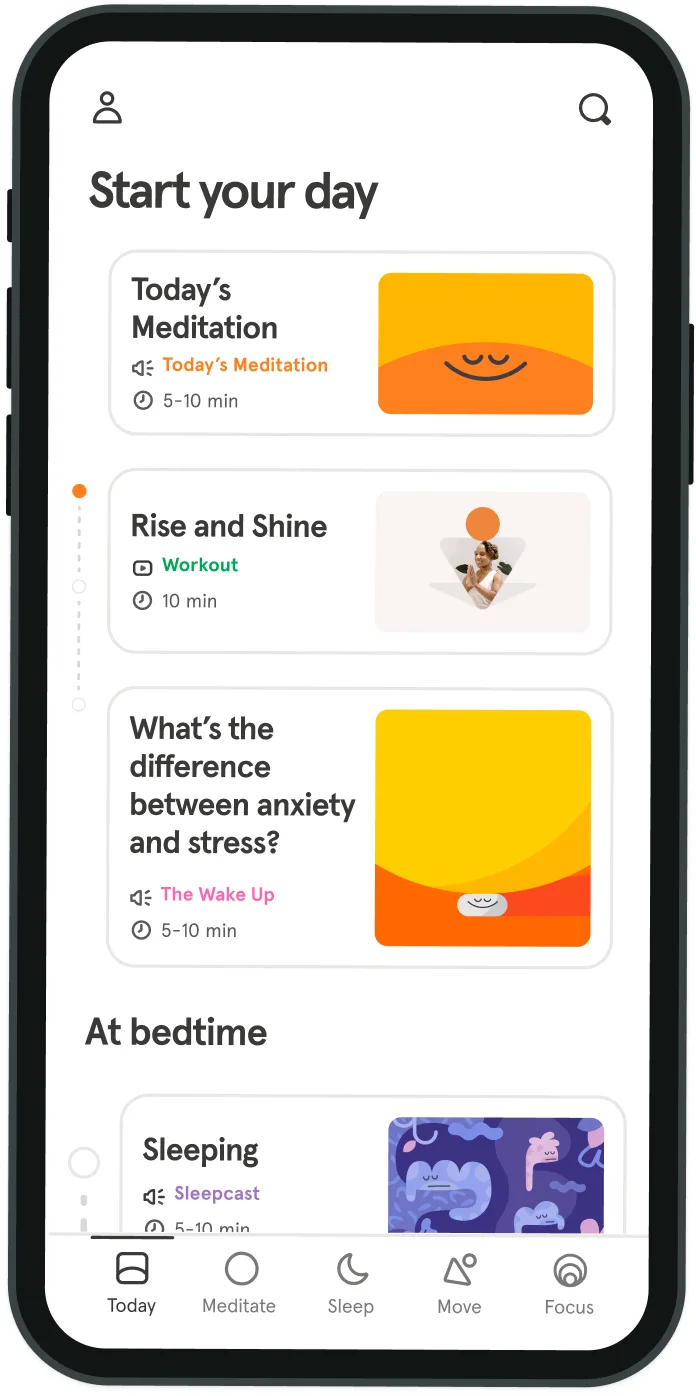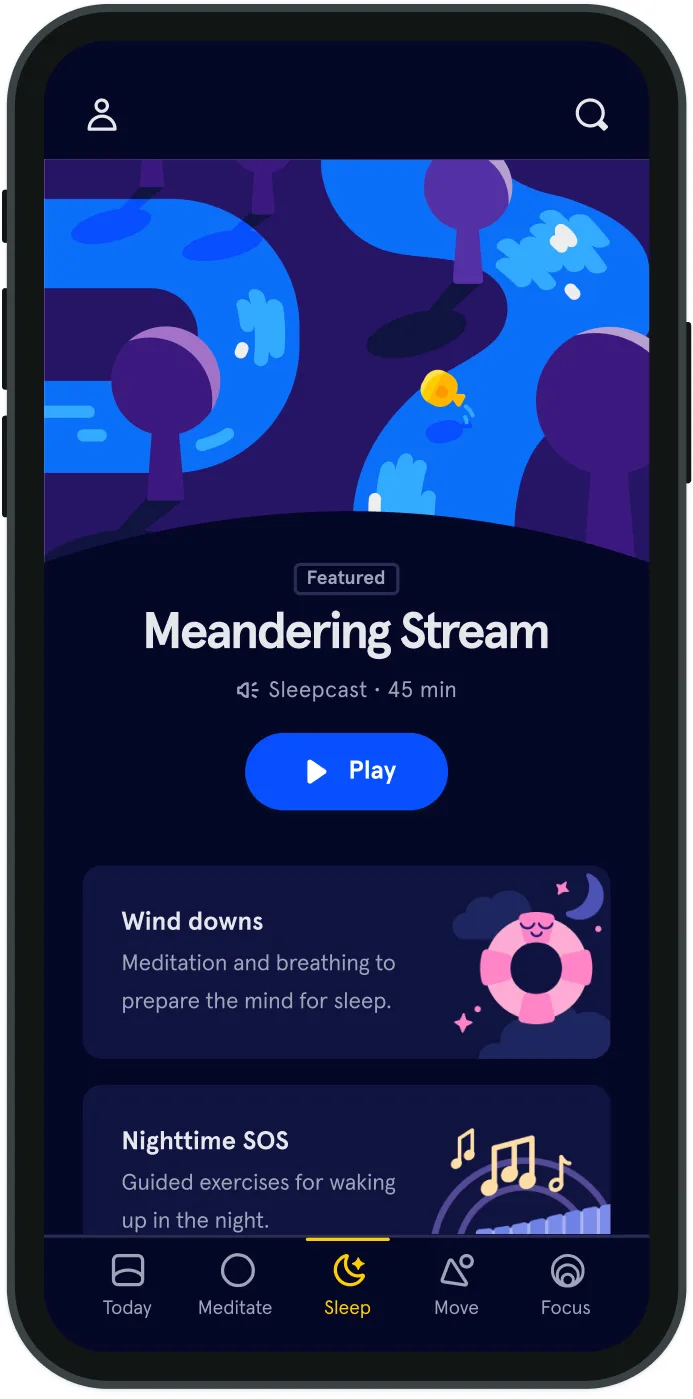Olympic runner Colleen Quigley on meditation and being "in the zone"
Colleen Quigley is an American middle-distance Olympic runner and Nike-sponsored athlete for the Bowerman Track Club, who is passionate about food and the steeplechase. The following post originally appeared in her newsletter "The Steeple Squigs Update" and has been lightly edited for clarity.
Wouldn’t it be great to feel “in the zone” more often? That’s why I meditate.
As an athlete I spend SO much time and energy training my body to perform a certain way, but if I don’t spend at least some time training my mind, I will never know what my physical potential truly is. However, I didn't always see my mental game this way! I used to really reject the idea that my mentality had anything to do with any of my bad races or workouts. Mentally weak? No way! That struggle was all physical. I physically could not do more, my legs physically felt like crap, I physically gave it all I had and it wasn’t enough. In some ways, it is true. I’ve had races where I physically did feel crappy, but what did I do with that? Was I able to grapple with that sensation, move beyond it, and truly get the most out of myself? Or did I mentally shut down, let the negative thoughts takeover, let my form crumple and end up disappointed and even a bit embarrassed? Sometimes I can pull myself out of that funk and still have a solid day, but sometimes I get sucked into that dark hole and end up throwing in the towel. Like I said, I’ve been running for about 10 years now, so I’ve had disappointing days where I felt like all the training I did meant nothing on race day and I walked away feeling unsatisfied and exhausted. On the flip side, I’ve had plenty of days where I walked away feeling exuberant, proud, and completely at peace with my performance.
“What mattered was going out there and doing it, not thinking about it, not worrying what others might think, not even being attached to a particular result, just doing it.” — Andy Puddicombe, Founder of Headspace
I remember lining up for the Olympic Trials in 2016 after spending so many months leading up to the race injured and unable to run. I remember feeling a sense of _what the hell, I’_m just gonna go for it, I have nothing to lose here. That is the most freeing way to race, and when it came time in the race to cover my competitors’ moves and put myself in a position to qualify for my first Olympic Games, I went for it — and it paid off big time. At that time I hadn’t started a practice of meditation and I really don’t know how I got myself in such a good place mentally before that race, but somehow I did. I remember thinking afterwards — I wish I could always race like that. And I guess that’s the trick — you can sometimes get yourself there on your own, but what you really want is to find that mental clarity and strength every single time you race and even every time you work out.
The not knowing if you will be in the right mindset or not, not knowing how to pull yourself out of a funk, not knowing how to focus and relax... the not knowing is the risky part. Wouldn’t it be great to feel “in the zone” more often? That’s why I meditate. I’m not trying to say that now I meditate and I never have off days — no way! I’m still human. But I am learning and getting better at handling my thoughts during workouts and races. Now, when I am in the middle of a long, grinding tempo with my teammates and the negative thoughts pop up like: I am so tired, I can’t keep this pace for another 3 miles, I’m going to have to drop out, I am better at recognizing them as thoughts, nothing more, and letting them go, refocusing on the moment and the lap that I am currently in. Not wasting energy stressing about what will happen at some point in the future saves energy for productive work in the present. Before I know it, the present moment is that last lap that I thought I’d never make it to!
The first time I realized the benefits of Headspace in a race was about 6 months into my practice. Before opening up my indoor track season at the Millrose Games in New York City, my teammates and I spent a month training together at high altitude in Colorado Springs. During that month, I got into a great routine of meditating for 10 minutes every morning when I woke up. I went through both the training and competition packs on the Headspace app and read the book "The Headspace Guide to Meditation and Mindfulness" by Andy Puddicombe. Everything Andy had to say really rung true with me and I went into my race in New York feeling calm and confident despite having dealt with some setbacks in my training due to injury. In the race I was able to execute the race plan my coach and I discussed and when it came time to cover moves and move through the crowd, I did so without extra stress or anxiety but with clarity and purpose. When I broke the tape at the finish line I remember it feeling easy and fun! Afterwards I turned to my boyfriend to say: "It was the Headspace!" ... and my french braids. ;)
I'm going to keep meditating because of the way it makes me feel in my personal life and the way it helps me get the most out of myself on the track. Those two purposes go hand in hand because I'm not Colleen the daughter, sister, teammate, friend, girlfriend and then separately, Colleen the athlete. I'm all those things at the same time and when I'm happy, I run well.
If you are not in the right place in your life to consider a meditation practice at this time, that is perfectly understandable. I have been running for over 10 years and have just now come around to the idea. Everything in its own time. However, if you have been looking for that missing piece, an extra edge, a way to improve your life and your training, it might be worth checking out.
Colleen's Meditation Practice
When: In the morning, first thing when I get up. How: At home I have a meditation cushion that I sit on with my hips elevated and legs crossed, hands on my knees with palms facing down. When I’m traveling I just find a few pillows to sit on instead to get the angle right between my hips and knees. I use Headspace, which has guided meditations that help you figure out how to sit still and silent for a set amount of time. This is great for beginners especially since the whole idea of meditation can be kind of intimidating and overwhelming. Headspace co-founder, Andy Puddicombe, will tell you everything you need to know and help remind you along to way in case you get caught up in your thoughts or feelings during the meditation. How long: I usually sit for 10 minutes. If I’m really rushed I’ll do 5, but it takes me a few minutes to really get into it, so 5 feels too short. How often: Every day! My longest streak was over 100 days in a row. It got ruined because I was traveling and got out of my normal schedule. Favorite Headspace Packs: I love the “Training” and “Competition” packs on Headspace and have done both multiple times. I also like the “Motivation” pack and the “sleeping” single.
“What mattered was going out there and doing it, not thinking about it, not worrying what others might think, not even being attached to a particular result, just doing it.”— Andy Puddicombe, Founder of Headspace
Headspace


Be kind to your mind
- Access the full library of 500+ meditations on everything from stress, to resilience, to compassion
- Put your mind to bed with sleep sounds, music, and wind-down exercises
- Make mindfulness a part of your daily routine with tension-releasing workouts, relaxing yoga, Focus music playlists, and more
Meditation and mindfulness for any mind, any mood, any goal

Stay in the loop
Be the first to get updates on our latest content, special offers, and new features.
By signing up, you’re agreeing to receive marketing emails from Headspace. You can unsubscribe at any time. For more details, check out our Privacy Policy.
- © 2025 Headspace Inc.
- Terms & conditions
- Privacy policy
- Consumer Health Data
- Your privacy choices
- CA Privacy Notice
